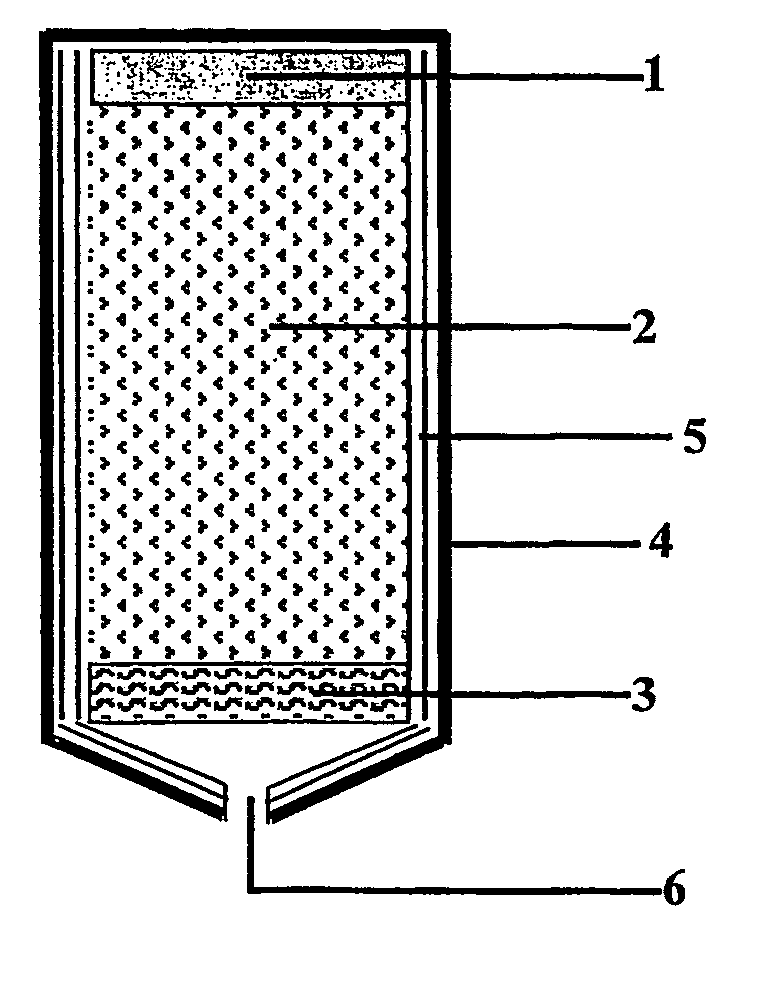Cool oxygen chemical gas generator
a gas generator and oxygen technology, applied in the field of chemical oxygen gas generators, can solve the problems of clogging the porous charge, affecting the efficiency of gas generators, so as to prevent the heating of the outer surfa
- Summary
- Abstract
- Description
- Claims
- Application Information
AI Technical Summary
Benefits of technology
Problems solved by technology
Method used
Image
Examples
Embodiment Construction
The chemical cool oxygen generator (FIG. 1) includes a housing, 4, wherein a porous charge, 2, made of the oxygen generating material is mounted. The self-sustaining decomposition (combustion) of the charge, 2, is initiated by means of the igniter, 1. The reaction starts on the charge surface adjacent to the igniter and the reaction front runs through the charge body to the opposite end in direction to the vent, 6. Under the pressure difference the oxygen generated as a result of the reaction passes through the body of the virgin porous charge, is cooled there and passes through vent, 6, to the user, or to a storage bottle.
In one of the preferred embodiments, the housing is protected from the heat of the decomposing charge by a thermal protection 5, preferably made from silica or glass fiber impregnated with the same binder as used for the charge 2. In another preferred embodiment, the charge 2 itself provides the thermal protection of the housing. In this case a layer of ˜1.5 mm...
PUM
| Property | Measurement | Unit |
|---|---|---|
| temperature | aaaaa | aaaaa |
| porosity | aaaaa | aaaaa |
| porosity | aaaaa | aaaaa |
Abstract
Description
Claims
Application Information
 Login to View More
Login to View More - R&D
- Intellectual Property
- Life Sciences
- Materials
- Tech Scout
- Unparalleled Data Quality
- Higher Quality Content
- 60% Fewer Hallucinations
Browse by: Latest US Patents, China's latest patents, Technical Efficacy Thesaurus, Application Domain, Technology Topic, Popular Technical Reports.
© 2025 PatSnap. All rights reserved.Legal|Privacy policy|Modern Slavery Act Transparency Statement|Sitemap|About US| Contact US: help@patsnap.com


